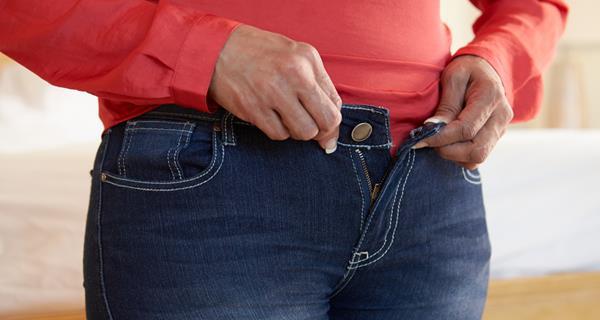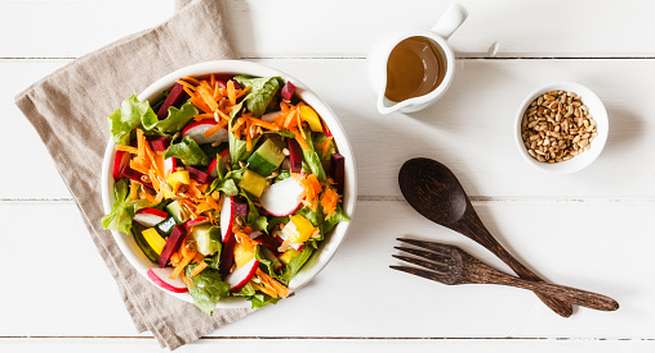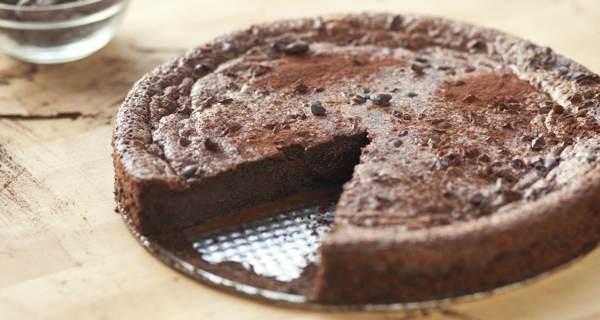Launch a Successful Food Program for Weight Loss
Eight years ago on the day after Thanksgiving, Wayne Vandenlangenberg did not feel well but went to work anyway. He was used to fighting off both colds and pneumonia, so he figured he would simply stop by the clinic for medicine after work.
But when you weigh 674 pounds, nothing is ever simple. Vandenlangenberg does not remember being rushed to the hospital or that, once there, his oxygen level was only 39%. Doctors induced him into a coma for 11 days, during which time he “physically died,” he said, and he received a “visit” from his late grandmother, who sat on his bed, held his hand and told him she wasn’t ready for him and that he needed to go back and finish something. He awoke from his coma before she finished her sentence.
Eventually, after 64 days in the hospital — nearly half of that time in intensive care — doctors sent Vandenlangenberg back home to Neenah, Wisconsin, about 30 minutes outside of Green Bay, in a wheelchair. Medical staff provided no dietary instructions or weight-loss advice.
At that time, Vandenlangenberg was consuming about 13,000 calories a day, including sometimes as many as 30 cans of soda a day. He could scarf down two or three double whoppers from Burger King in one sitting before heading off to his next favorite fast food restaurant. Upon being released from the hospital, he had heart disease and water retention. “I don’t think they [his doctors] expected me to go any further in life,” he said.
For the next six months, he sat at home by a window, depressed, watching the world go by. Then he saw a TV commercial for LA Weight Loss. He worked up the courage to join under the care of his doctors. In five months, Vandenlangenberg lost 100 pounds. When that weight-loss center closed, he joined others.
Vandenlangenberg finally found a long-lasting support system when he joined TOPS Club Inc. (Take off Pounds Sensibly), a network of weight-loss support groups across the country. While TOPS does not offer or endorse a particular diet plan, members meet and weigh in each week.
As Vandenlangenberg began shedding pounds, people took notice and paid attention to him, he said. His self-esteem rose and helped to keep him going. He also figured out how to eat in moderation.
While he did have setbacks, after five years, Vandenlangenberg — who works as a cook and bartender at Appleton International Airport — reached his goal weight of 210 pounds. He has maintained that weight for three years.
The biggest barrier to his massive weight loss, he confessed, were feelings of worthlessness, which he has carried since childhood. “I had to learn to find myself and love myself,” he said.
Whether you want to lose 20 pounds or 200, you will need to make a lifestyle change to achieve your weight-loss goal. You probably already know at least some of those necessary changes: cutting back on caloric drinks including soda, fruit juice, sports drinks, and maybe even milk; being mindful of portion size; increasing your fruit, vegetable, and fiber-rich food intake; and eliminating processed foods, including processed meats. You also may be familiar with the need to eat enough dairy foods, some proteins, and fats and to ensure a mix of all foods in your diet.
Get real
But here is one of the most important nuggets: It is crucial to set realistic expectations. Amy Fischl, a registered dietitian at The University of Chicago Medical Center, stressed if a person with diabetes who weighs 220 pounds wants to lose 70 pounds, for example, that probably is unrealistic. Also, if someone hopes to lose a large amount of weight quickly — three weeks before a wedding, for instance — that probably won’t happen either.
“People want to see success, and if they don’t see success, they will stop,” Fischl said.
That’s why it is important not to set yourself up for failure. Fischl suggests looking at weight loss in five-pound increments. If you lose five pounds, then set another small goal. Also, be realistic about how quickly you can lose the weight.
Losing weight is really hard, she said. “People need to understand that they have to put a lot of effort in.” And keeping weight off also is hard. According to at the National Weight Control Registry, an investigation into people who have maintained long-term weight loss, those who have lost weight successfully and kept it off have some commonalities, Fischl said, including not taking “holidays” from calorie reduction, completing food logs, and measuring what they eat either daily or every couple of weeks. If you don’t take losing weight seriously, she said, you are not going to successfully lose it and keep it off.
While Vandenlangenberg lost over 450 pounds, it took him years and drastic lifestyle changes to get there. Today, he eats 1,500 calories per day (down from 13,000), and he exercises regularly. Before, he used food as a crutch to dull painful feelings, but that is no longer the case. He also no longer has red meat in his diet and has limited carbohydrates. He drinks only sugar-free sodas now, and generally only one per day. To keep his hands busy (and away from bringing food to his mouth), he enjoys crafts such as crocheting. He is in touch with his caloric intake — enough to know that if he saves calories on his afternoon snack he can use them to eat a more calorie-rich dinner, he said — but that was not always the case.
Weight loss as drastic as Vandenlangenberg’s is not typical, said Fischl, but it is possible.
Keep a food log
Many people starting a lifestyle-changing food program want someone else to tell them what to eat. They want a meal plan. But a nutritionist cannot provide a meal plan without first knowing how a person currently eats and exercises, Fischl said.
That is why it is important to keep a food log, she said. Write down everything you eat for a couple of days without passing any judgment on yourself. Be sure to measure what you eat with measuring cups or spoons. Then consider making an appointment with a registered dietitian and bring your food log with you. This way, the dietitian can help develop a healthy, individualized food plan just for you based on your current habits.
The dietitian may look at your eating patterns and suggest a small change, such as cutting out caloric beverages. Just that one change could have a beneficial impact on one’s weight and blood sugar levels, Fischl said.
Whether or not you see a dietitian, a food log still can be helpful. Sometimes just seeing on paper how much you have been eating can lead to behavior change.
What’s your portion?
Many people do not realize that as we age, we do not require as many calories as we did 10 years ago, Fischl said.
Also, there are no “bad” foods, she said, only oversized portions.
Many studies have shown that cutting out certain foods does not lead to weight loss. Instead, the goal should be to reduce your overall caloric intake, said Fischl.
Yet, the problem often is that many people have no concept of portions. Many household drinking glasses, for example, hold 12 to 16 ounces of fluid. People may think they are drinking a cup of milk when, in fact, with a 16-ounce glass they are consuming two cups.
Measuring cups are key. If you measure your food at least some of the time, you will become accustomed to what a cup of rice or milk looks like, and you will gain a better understanding of what you are actually eating compared to an actual serving size.
Read the nutrition facts labels on your food packaging to learn more about serving sizes — standardized amounts from the U.S. Department of Agriculture (USDA). The discrepancy lies in the difference between a serving size and a portion size, the latter being what people usually eat. For example, a person may eat an entire bag of chips when the serving size is 15 chips and have no idea how much more he or she has eaten than is recommended.
If you have diabetes, you also need to learn how to recognize what types of carbohydrates you are eating throughout the day. People with Type 2 diabetes must make sure they don’t eat too many carbohydrates so after-meal sugar doesn’t rise too high, Fischl said. Once people understand what the carbohydrates are in their diet, they can create balance. They may learn to say, for example, “I want to have seven different carbs at lunch, but that can’t happen so what can I cut out?” she said.
Make a clean sweep
Now that you’ve determined how you will lose weight, you need to ensure your kitchen is ready for success. To help make your lifestyle change stick, first eliminate any unhealthy foods that may tempt you, such as desserts, chips, ice cream, and other processed foods.
Everyone has trigger foods, Fischl said. Identify yours and take them off countertops and out of the fridge and freezer. A recent study, Slim by Design: Kitchen Counter Correlates of Obesity, from researchers at Cornell University, found having food items on the countertops leads to weight gain.
Susan Ojanen, a certified integrative nutrition coach and owner of Small Steps Wellness (smallstepswellness.com), based in Bristol, Tennessee, offered a number of recommendations and tips for readying your kitchen.
• Toss canola and vegetable oils (seed oils) and stick with extra virgin olive oil or coconut oil.
• Toss bottled salad dressings, white breads, and processed meats, including lunch meats with nitrates.
• Replace peanut butter — which is loaded with sugar, she said — with almond butter.
• Stock your kitchen with raw nuts, quinoa, and tons of fresh fruits and vegetables.
• Stock your refrigerator with ingredients for healthy dinner options and have recipes ready. That way, when you come home from a busy day at work and have limited time to cook, you have healthy options and don’t opt to go out to dinner instead.
• Cook double or triple the usual amount and freeze the leftovers for lunch or dinner the next day to save time.
• Teach your children how to read food labels and encourage them to pack lunches and healthy snacks.
• Have spices and herbs on hand to ensure you can make healthy yet tasty meals. Cumin, for example, can be added to fish, soups, or stews. Thyme can be used on chicken, while marjoram adds flavor to fish, chicken, or beef.
“Spices are what’s going to make people want to eat food,” agreed Fischl, who favors real garlic or garlic powder and also keeps bay leaves, black and cayenne pepper, Mrs. Dash, ginger, rosemary, thyme, and vanilla on hand in her kitchen. She advises people to experiment with spices to see which ones they like best.
To maximize your new program’s success, make sure you have the necessary kitchen gadgets — measuring cups, measuring spoons, and a scale. Keep measuring cups and spoons front and center when you are preparing food so they are easy to find. Food processors are not necessary, but they make it easy to incorporate more vegetables into your recipes, said Fischl. Having good, sharp knives is important, said Ojanen, as is a blender for making healthy smoothies.
Instead of using serving platters or bowls on the dining room table, serve yourself directly from the pot or pan and use measuring cups and scales to dish out your portion, Fischl said, adding that having all parts of the meal on the table makes it more likely you will overeat.
Slow down
Make sure to relax and enjoy your meals. Avoid watching television while eating. Give yourself 20 to 25 minutes to savor your food — it takes your brain 15 to 20 minutes to realize you are full, another reason eating more slowly will result in eating less.
You can even turn a meal into an event by lighting candles and putting on music. When eating, Fischl suggest, put your fork down between bites, which forces you to eat more slowly.
A little help from your friends
Having a support network is key to maintaining a successful lifestyle changing food program.
“We’re not islands,” Fischl said. “And again, the only way we are going to maintain a very difficult path is if we have cheerleaders, people who are going to egg us on.”
For Vandenlangenberg, TOPS Club became that support network for his 450-plus pound weight loss. Members meet weekly, and activities include singing upbeat songs to support one another and regularly celebrating one another’s successes. At first, he said, he thought the TOPS people were crazy, but eventually they became his second family.
“Knowing you have to face that scale every Wednesday night kind of keeps you in line,” said Vandenlangenberg, “and that’s what I needed… I learned that I was more important than the food.”
-
8 vegetables that will help you lose weight
-
Build muscles to lose weight!
-
Eggs – a perfect non-vegetarian food for weight loss!
For
-
Tips for buying the right herbal tea for weight loss
-
Which cardio machine is better for weight loss: Treadmill or Elliptical trainer?
-
Begin eating chocolate to lose weight!
- DON'T MISS
- Can excessive sweating cause weight loss?
- The world is getting fatter and fatter: WHO
- Did you know this rice can aid in weight loss?
- Lose your love handles with side dumbbell bends
- Lose weight with cinnamon tea
- Eat six times a day to lose weight!
- 5 best exercises for flat abs
- Try the vegan diet to lose weight!
- Running vs. Cycling — Which is better for weight loss?
- Want to lose weight? Try these delicious low-calorie recipes




